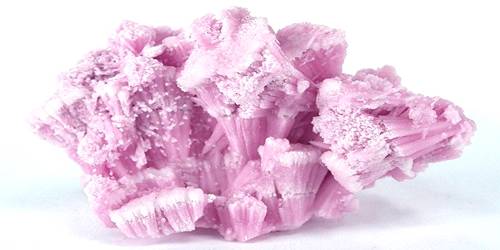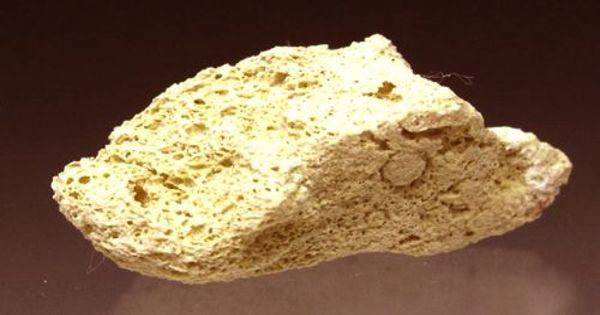Ferrihydrite (Fh) is a widespread hydrous ferric oxyhydroxide mineral at the Earth’s surface and a likely constituent in extraterrestrial materials. Ferrihydrite is a metastable mineral. It is known to be a precursor of more crystalline minerals like hematite and goethite by aggregation-based crystal growth. However, its transformation in natural systems generally is blocked by chemical impurities adsorbed at its surface, for example, silica as most of the natural ferrihydrites are siliceous.
Generally is a hydrated iron oxide. It forms in several types of environments, from freshwater to marine systems, aquifers to hydrothermal hot springs and scales, soils, and areas affected by mining. Under reducing conditions as those found in gley soils, or in deep environments depleted in oxygen, and often with the assistance of microbial activity, ferrihydrite can be transformed in green rust, a layered double hydroxide (LDH), also known as the mineral fougerite.
General Information
- Category: Oxide minerals
- Formula: (Fe3+)2O3•0.5H2O
- Crystal system: Hexagonal
- Crystal class: Dihexagonal pyramidal (6mm)

Fig: Ferrihydrite
Properties
A poorly crystalline nanomineral built up of about 20% (FeO4) and 80% (FeO6) polyhedra. It forms by rapid oxidation and hydrolysis, and exists in varying degrees of structure disorder; the two extremes are the so-called 2-line and 6-line ferrihydrites.
- Formula mass: 168.70 g/mol
- Color: Dark brown, yellow-brown
- Crystal habit: Aggregates, microscopic crystals
- Streak: Yellow-brown
- Diaphaneity: Opaque
- Density: 3.8 g/cm3
Occurrence
It can be precipitated directly from oxygenated iron-rich aqueous solutions, or by bacteria either as a result of a metabolic activity or passive sorption of dissolved iron followed by nucleation reactions. Ferrihydrite also occurs in the core of the ferritin protein from many living organisms, for the purpose of intra-cellular iron storage.
Information Source:
















